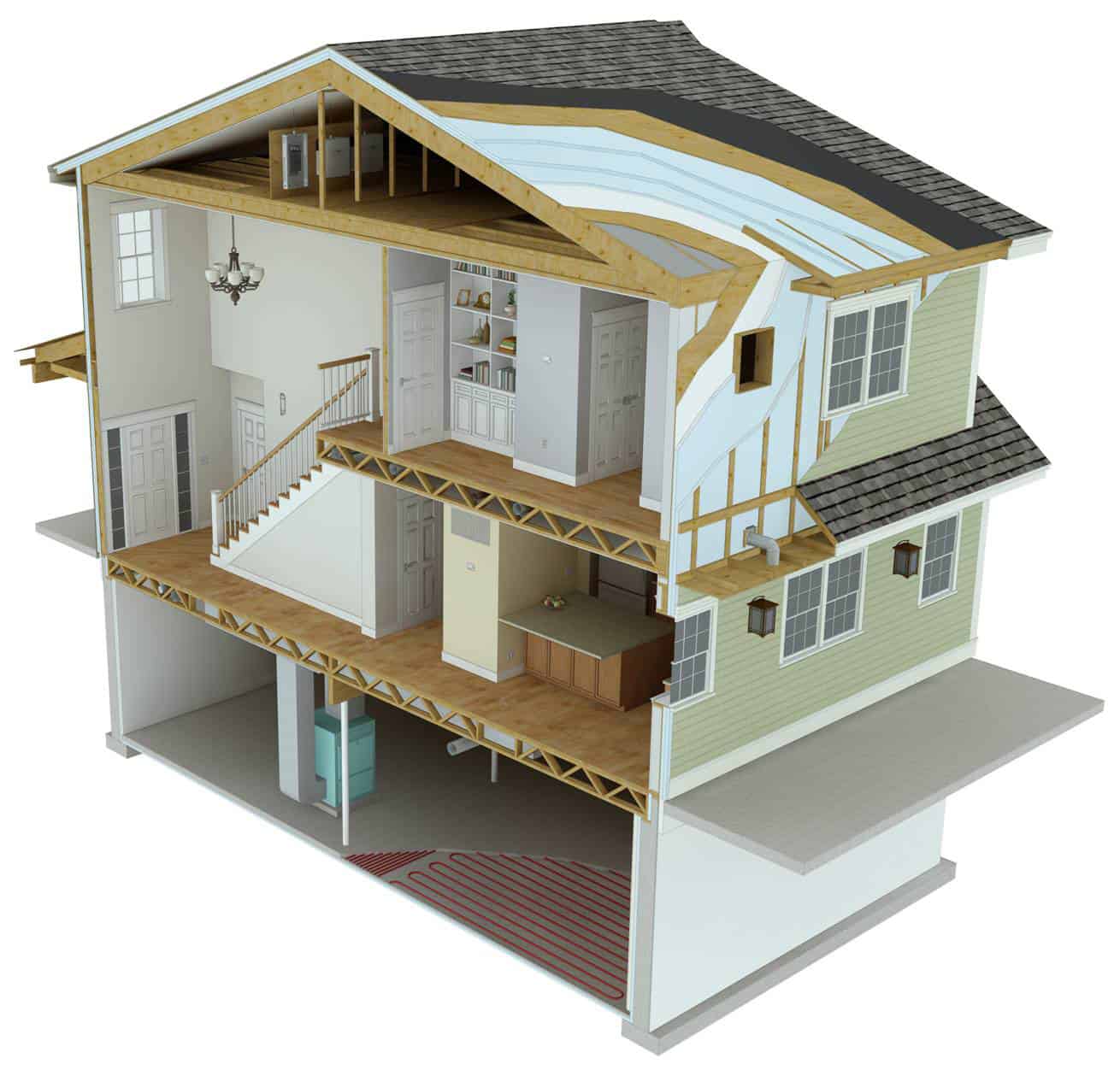
How Building Envelopes Impact Your Health
A building envelope is commonly defined as the separation of the interior and exterior of a building. It’s the physical separator between the conditioned and unconditioned environment of a structure including the resistance to air, water, heat, light, and noise transfer, which includes doors, windows, roof, foundation, floor, siding and all the components such as structural masonry and insulation.
A well-functioning building envelope harmonically combines all the exterior elements of a home to keep heat (and cool air in the summer) locked inside while preventing moisture from permeating the structure from the outside. Quality builders like Quarry View Building Group use top-of-the-line materials and methods to create an efficient barrier and optimal airflow for both comfort and energy efficiency.
But what if your building envelope is leaking like a sieve? How can building envelopes impact your health? We’ll discuss the ramifications of a leaky house and how you can prevent impacts on your energy bills and health.
Tight or Loose?
Building envelopes are often characterized as either “tight” or “loose.” A loose building envelope allows more of a natural air transfer to occur, which improves indoor air quality which can remove the need for mechanical ventilation.
These types of building envelopes make the building more drafty and uncomfortable. It also makes the building harder to regulate temperature levels. This creates a higher chance of mold or mildew, and higher quantities of heated or cooled air can escape through leaks in the loose building envelope.
This will increase energy bills along with negatively impacting the environment by releasing more greenhouse gases. Conversely, a tight building envelope allows for a high level of control over indoor air quality, temperature, humidity levels, and energy consumption.
Ultimately, the perfect building envelope is tight but with significant air flow from the home’s HVAC system rather than gaps in the structure. Controlled air flow from designed systems will keep dust and mold out while maintaining temperature.
Why Do Building Envelope Systems Fail?
When the building envelope system is designed and constructed properly, very few occupants pay attention. But when the building envelope fails, there can be a noticeable effect on the home’s occupants. What causes the building envelope to fail?
- Design deficiencies. Poor building design can include specifying materials that are incompatible with thermal performance, structural capacity, or water penetration resistance.
- Material failure. Sometimes those specified materials fail to meet published performance levels. This could be a result of errors in the manufacturing, handling, or storing of the product or components.
- Poor workmanship. Inexperienced contractors or just shoddy workmanship can lead to building envelope components not installed correctly per the manufacturing specifications.
Sick Building Syndrome
The term “sick building syndrome” (SBS) describes situations in which building occupants experience acute health issues and/or discomfort that appear to be linked to time spent in a building. The complaints may be localized in a particular room or zone or may be widespread throughout the building. Symptoms of SBS may include:
- Itchy, irritated, dry, or watery eyes
- Nasal congestion
- Throat soreness or tightness
- Dry, itchy skin, or unexplained rashes
- Headache, lethargy, or difficulty concentrating
The National Institute for Occupational Safety and Health (NIOSH) states that 52 percent of poor indoor quality cases are due to poor ventilation. The other main culprit is, according to NIOSH, “microorganisms and other biological contaminants” which include viruses, fungi, mold, bacteria, nematodes, amoeba, pollen, dander, and mites.
The best method for preventing sick building syndrome is to improve the indoor air quality of the home. And that means improving the building envelope. Improving airflow can include inspecting HVAC systems for leaks and poor performing duct bins. Adding more return air vents can also be helpful to balance the amount of air brought into the house and then blown out.
Wrapping Up Building Envelopes
The easiest way to build and maintain your home’s building envelope is to work with an experienced builder like Quarry View Building Group. Our skill and knowledge of the construction process and state-of-the-art materials mean your building envelope will be the tightest needed to protect the health of you and your family. For more on building envelopes or any construction-related issues, contact us at Quarry View Building Group.
